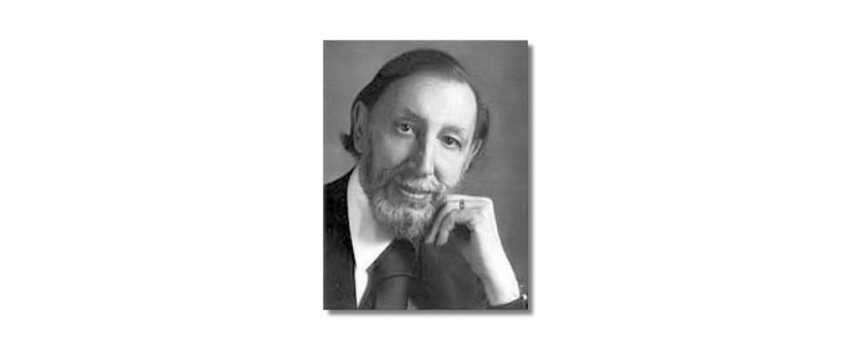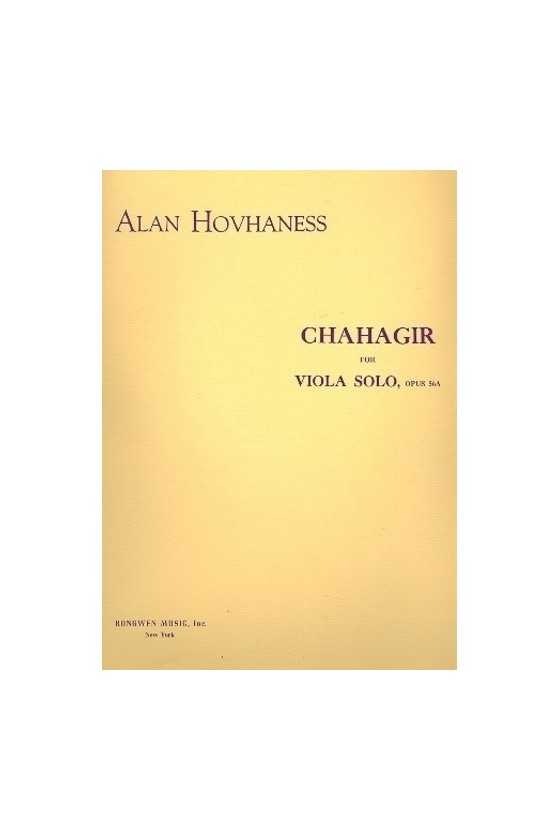Hovhaness, Alan
Alan Hovhaness (March 8, 1911 – June 21, 2000) was a composer who was half-Armenian and half-American. He was one of the most prolific composers of the twentieth century, with 67 numbered symphonies and 434 opus numbers in his official repertoire. Because many opus numbers contain two or more unique pieces, the figure is well over 500 surviving works.
Richard Buell, a music writer for the Boston Globe, wrote: "Despite being categorized as a self-consciously Armenian composer (rather than Ernest Bloch as a Jewish musician), his work incorporates music from various cultures. The way it turns its elements into a type of exoticism may be the most American aspect. The mood is solemn, respectful, mystical, and nostalgic." Alan Vaness Chakmakjian was born to Haroutioun Hovanes Chakmakjian (an Armenian chemistry professor at Tufts College born in Adana, Turkey) and Madeleine Scott in Somerville, Massachusetts (an American of Scottish descent who had graduated from Wellesley College). When he was five years old, his family relocated from Somerville to Arlington, Massachusetts. According to a neighbor of the Hovhaness family, his mother insisted on leaving Somerville because of bigotry towards Armenians. He began using the surname "Hovaness" in honor of his paternal grandpa after she died (on October 3, 1930), then modified it to "Hovhaness" around 1944. He explained that the name change from Chakmakjian was motivated by a desire to simplify his name because "nobody ever pronounced it correctly." However, in her book Unconventional Wisdom, Hovhaness' daughter Jean Nandi writes, "At the time of my birth, my father's name was pronounced 'Hovaness,' emphasizing the first syllable. His actual name was 'Chakmakjian,' but he changed it to an Americanized form of his middle name in the 1930s to avoid the Armenian link. Years later, he modified the spelling to 'Hovhaness,' emphasizing the second syllable, to re-establish his Armenian ties; this was the name by which he later became well-known."
From a young age, Hovhaness was captivated by music. He wrote his first work at the age of four, a cantata in the early Italian style inspired by a Franz Schubert song. His family was worried about his late-night compositions and the financial prospects he may have as an artist. He opted to explore astronomy for a short while, another of his early passions. His love of astronomy persisted throughout his life and career as a composer, with several compositions named after planets and stars.
Hovhaness' parents were quick to support their son's early composing and arranged for him to take his first piano lessons with a local tutor. Adelaide Proctor and then Heinrich Gebhard continued Hovhaness' piano training. He decided to devote himself to composition when he was 14 years old. Baptist hymns and recordings by Gomidas Vartabed, a prominent Armenian musician, were among his early musical experiences. During his adolescent years, he composed two operas performed at Arlington High School, and composer Roger Sessions took an interest in his music at the time. After graduating from high school in 1929, he studied at Tufts with Leo Rich Lewis and then at the New England Conservatory of Music with Frederick Converse. With his Sunset Symphony, he won the Samuel Endicott prize for composition at the Conservatory in 1932. (elsewhere entitled Sunset Saga).
Hovhaness traveled to Finland in July 1934 with his first wife, Martha Mott Davis, to see Jean Sibelius, whose music he had admired since childhood. For the next two decades, the two exchanged letters. Jean Christina Hovhaness, Hovhaness's only child from his first marriage, was named after her godfather, Jean Christian Sibelius, who had been Hovhaness's friend for three decades.


